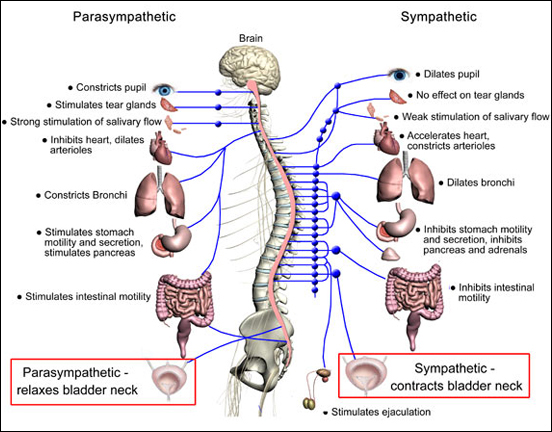

This response is characterized by the release of large quantities of epinephrine from the adrenal gland, an increase in heart rate, an increase in cardiac output, skeletal muscle vasodilation, cutaneous and gastrointestinal vasoconstriction, pupillary dilation, bronchial dilation, and piloerection. Under conditions of stress, however, the entire sympathetic nervous system is activated, producing an immediate, widespread response called the fight-or-flight response. The sympathetic nervous system normally functions to produce localized adjustments (such as sweating as a response to an increase in temperature) and reflex adjustments of the cardiovascular system. Know about the autonomic nervous system and its functions See all videos for this article This system controls gastrointestinal motility and secretion. Both systems have associated sensory fibres that send feedback into the central nervous system regarding the functional condition of target tissues.Ī third division of the autonomic system, the enteric nervous system, consists of a collection of neurons embedded within the wall of the gastrointestinal tract and its derivatives. Parasympathetic ganglia tend to lie close to or within the organs or tissues that their neurons innervate, whereas sympathetic ganglia are located at more distant sites from their target organs. The first set, called preganglionic neurons, originates in the brainstem or the spinal cord, and the second set, called ganglion cells or postganglionic neurons, lies outside the central nervous system in collections of nerve cells called autonomic ganglia. The motor outflow of both systems is formed by two serially connected sets of neurons. These often function in antagonistic ways. The autonomic system consists of two major divisions: the sympathetic nervous system and the parasympathetic nervous system. These integrated responses maintain the normal internal environment of the body in an equilibrium state called homeostasis. It also stimulates the release of certain hormones involved in energy metabolism (e.g., insulin, glucagon, and epinephrine ) or cardiovascular functions (e.g., renin and vasopressin). However, it also relays visceral sensory information to the central nervous system and processes it so that alterations can be made in the activity of specific autonomic motor outflows, such as those that control the heart, blood vessels, and other visceral organs. The autonomic system usually is defined as a motor system that innervates three major types of tissue: cardiac muscle, smooth muscle, and glands. It operates independently of voluntary control, although certain events, such as stress, fear, sexual excitement, and alterations in the sleep-wake cycle, change the level of autonomic activity. The autonomic nervous system is the part of the peripheral nervous system that regulates the basic visceral processes needed for the maintenance of normal bodily functions. SpaceNext50 Britannica presents SpaceNext50, From the race to the Moon to space stewardship, we explore a wide range of subjects that feed our curiosity about space!.Learn about the major environmental problems facing our planet and what can be done about them! Saving Earth Britannica Presents Earth’s To-Do List for the 21st Century.Britannica Beyond We’ve created a new place where questions are at the center of learning.

100 Women Britannica celebrates the centennial of the Nineteenth Amendment, highlighting suffragists and history-making politicians.
SOMATIC NERVOUS SYSTEM EFFECTOR ORGANS HOW TO
COVID-19 Portal While this global health crisis continues to evolve, it can be useful to look to past pandemics to better understand how to respond today.Student Portal Britannica is the ultimate student resource for key school subjects like history, government, literature, and more.



 0 kommentar(er)
0 kommentar(er)
